Wednesday 19th June 2019
Here we go again, weather window antics, we plan to leave Tuesday, no Wednesday, no Tuesday, no Wednesday. I think we have settled on Wednesday but maybe that will be Tuesday afternoon or perhaps next week.
In the end we left rather quickly Tuesday lunchtime and before I had managed to upload this post, there are photos but I will have to attach them when we reach the UK. Reach the UK, how strange that sounds.
Horta the main port and capital of Faial in the Azores is a pretty town full of often crumbling but decorative terraced buildings. Churches white, with black detailing stand out in the sunshine and flowers greet you on every spare piece of ground.
 Church of Nossa Senhora das Angustias, in Horta
Church of Nossa Senhora das Angustias, in Horta
The Marina was friendly and being Europe the formalities straight forward. It was choc-a-bloc with transatlantic boats that continually arrived, stretching the facilities to the limit, for most of the stay we were rafted three deep.
The first few days were warm and sunny as we rushed about getting the normal mundane tasks completed. The laundry, run on a confusing part service, part do it yourself regime, was dictated over by a woman with Hitler pretensions and with so many boats continually arriving with weeks worth of dirty washing, it was a slow and painful process.
The supermarket however was well stocked and although everything was totally in Portuguese and it took us a bit of time to find what we needed, we, for the first time in a while, enjoyed delicious lunches of fresh fruit and tasty local cheese.
With the weather forecast looking unsettled for the weekend, Friday morning we took a taxi tour of the island. As we left the town of Horta and climbed into the hills, the smell of freshly mown grass assaulted our senses, with the lower temperatures, cows grazing in buttercup filled meadows and familiar bird song we could almost have been in Devon.
However, like most of the oceanic islands we have visited, the Azores were born from past volcanic activity. As we continued to drive higher we entered the cloud base that cloaks the highest peak here, as the mist swirled and thinned we caught glimpses of fantastic views of the island and the huge picturesque volcanic peak on the island across the channel, Pico.
We were headed to near the top of the Caldera do Faial, where a tunnel has been created through the rock side to a viewing platform to see the interior of the still perfectly circular cone. At 2km wide and 400m deep a unique ecosystem has sprung up in its base, with plants and birds not found anywhere else flourishing in their own tiny world.
 Caldera do Faial
Caldera do Faial
During the eruptions that created this volcano, pumice stone was flung out onto the island and this has made the soil here very fertile but acidic. Crowding every hedge row and many gardens are hydrangea plants, the acidic soil turns the normally pink flowers a bright blue and Faial has become famous for this magnificent summer display.
In stark contrast to the lush growth of most of the island is the barren headland on the NW coast, created by an eruption that took place less than 60 years ago, it resembles a moonscape. A huge slab of rock juts out to sea backed by rocks of solidified lava and slopes of sweeping black sand.
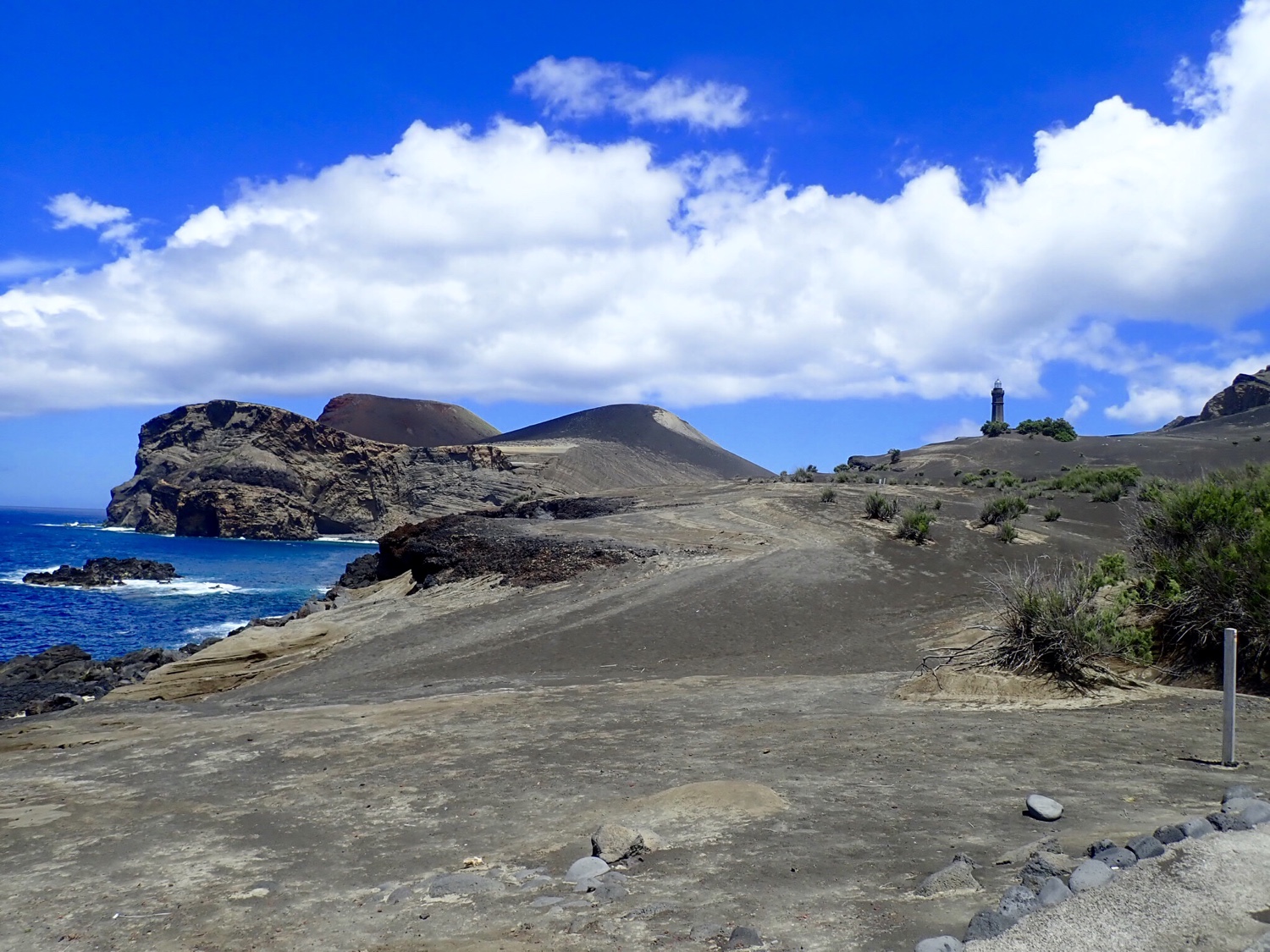 Volcanic landscape at Capelinhos
Volcanic landscape at Capelinhos
We were glad to have taken the time to explore because the weekend turned out to be quite stressful. We were tied up to the harbour wall, right in the corner, where the wash back from the swell, with the weight of two boats hanging off us, had us straining and jolting uncomfortably on our cleats, the creaking and groaning of the lines keeping us awake. Hours were spent tightening this rope, then tightening another, then loosening everything again as the tide dropped.
Finally Monday afternoon things quietened down and the showers cleared, time to get creative. As in a lot of ports and anchorages where ocean sailors gather, people like to leave their mark. Often it is in the form of national or yacht club flags, that adorn the insides of local bars and cafes or, as in the Percy Islands off the Australian East Coast where crews carve plaques that are nailed to the large A frame shelter on the beach. In the Azores the tradition is street art, every inch of the walls and paving of Horta marina are covered by paintings left by previous visitors.
We were keen to join in the fun and Rick had in his head planned a complex design to include the names of everyone who had helped us by joining us for an ocean passage. Unfortunately the combination of the busy first few days followed by the wet weather, had thwarted our attempts to put paint to concrete. Eventually, Monday, as an evening sun appeared we picked our spot and painted the background. This was nearly as far as we got, with a change in the forecast later in the week, making a quick departure looked advantageous. The original complex design had to be ditched and I and Tony were still painting Rick’s much simplified effort, as he refuelled Raya just an hour before we left.
 As Rick and Tony prepare the boat for departure I’m still busy painting
As Rick and Tony prepare the boat for departure I’m still busy painting
It is our first night out and we are motoring again in very light winds, the full moon shines brightly, the only star visible in the light sky is Jupiter twinkling to our south. In the log Rick described the sea state as, motoring through melted chocolate, it’s glossy dark surface heaving gently beneath our keel.
Wind is promised in a few days time, Plymouth and reality beckon.





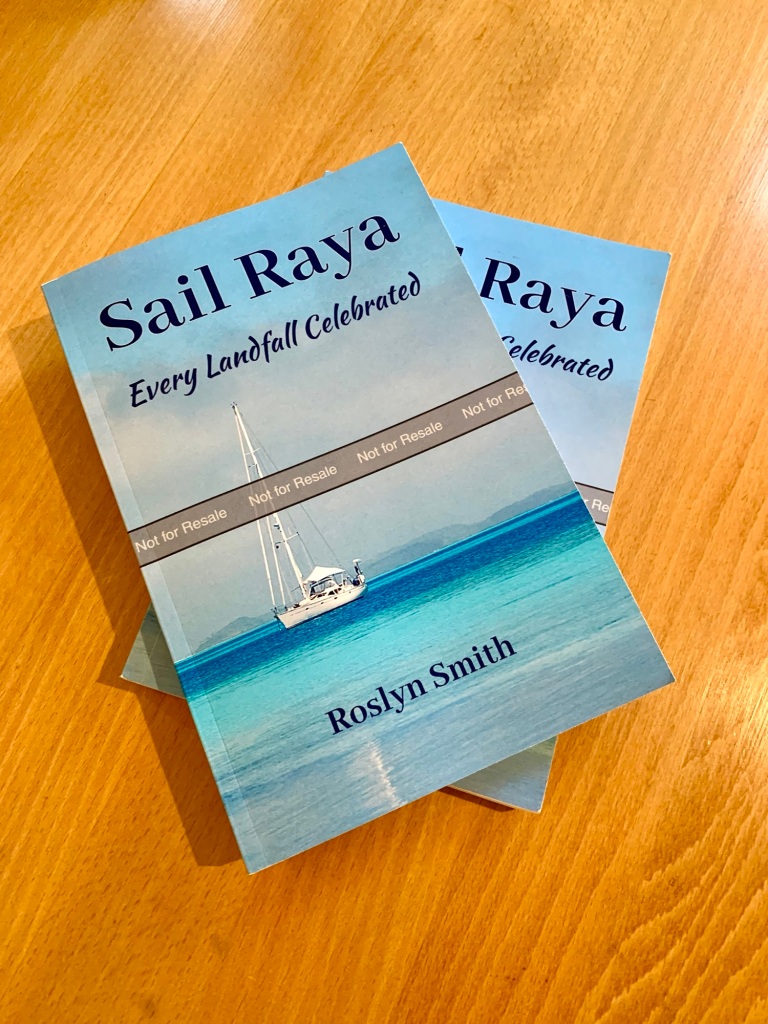


 Gradually putting on more clothes
Gradually putting on more clothes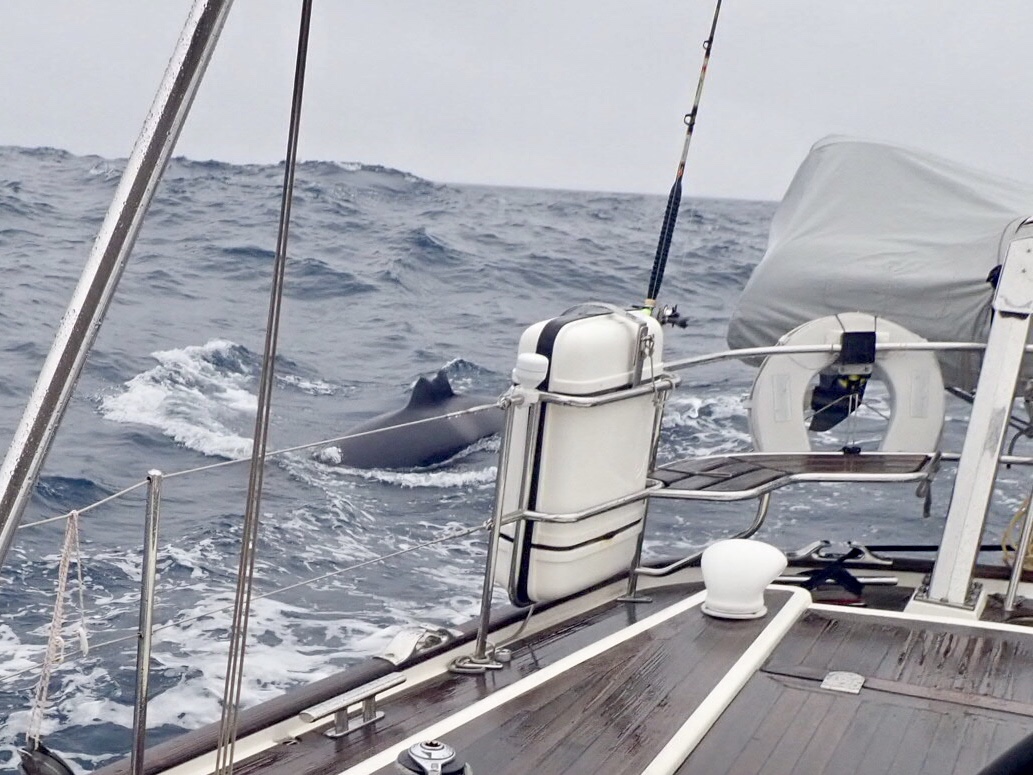 Killer whales swam right next to the boat, this one seems to have a rather big chunk out of his fin.
Killer whales swam right next to the boat, this one seems to have a rather big chunk out of his fin. UK coast on the chart plotter for the first time in four years
UK coast on the chart plotter for the first time in four years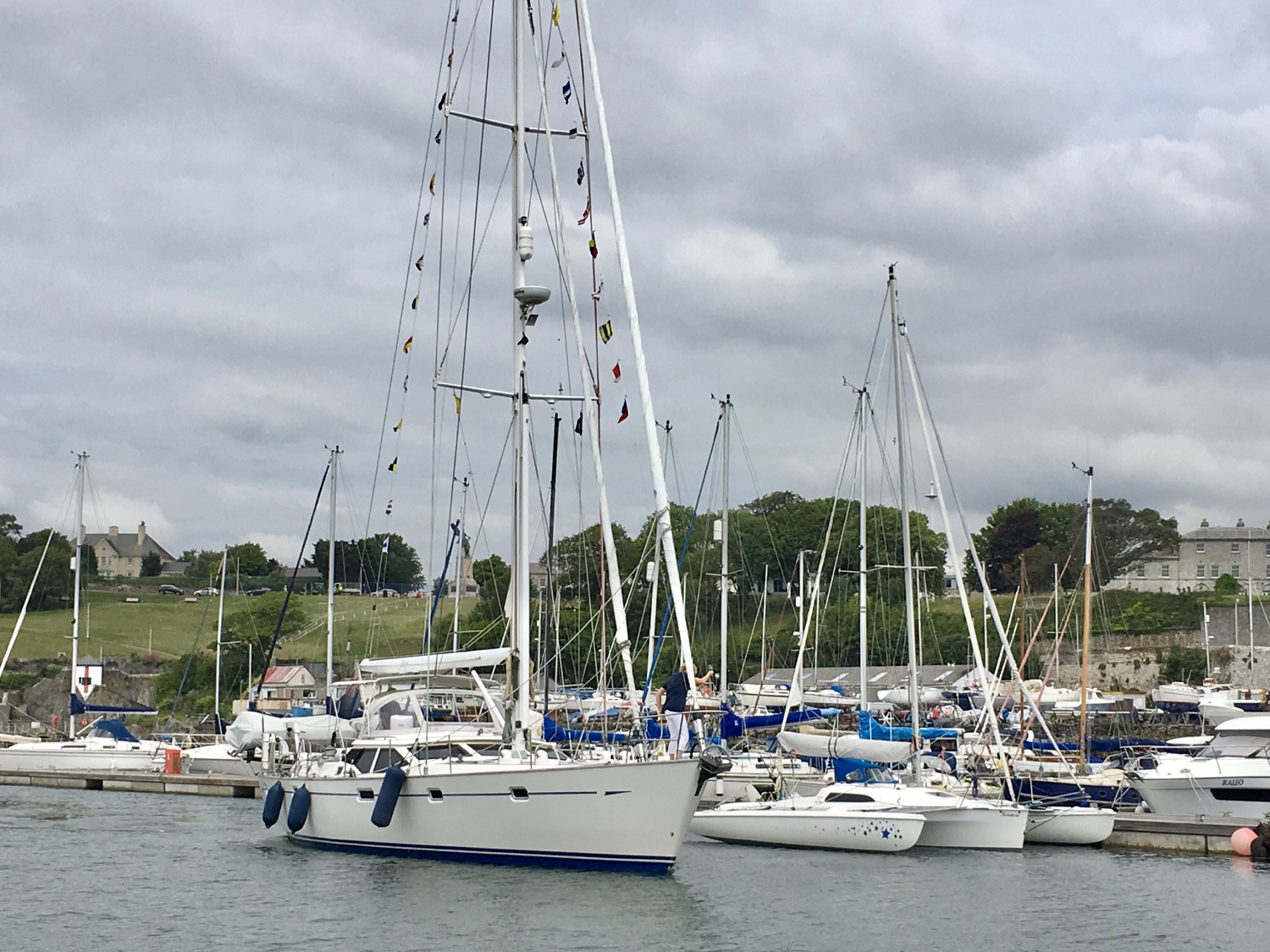 Raya arrives back in the UK
Raya arrives back in the UK



 ‘Got here beer’ in Horta
‘Got here beer’ in Horta A clump of a dozen sailing jelly fish
A clump of a dozen sailing jelly fish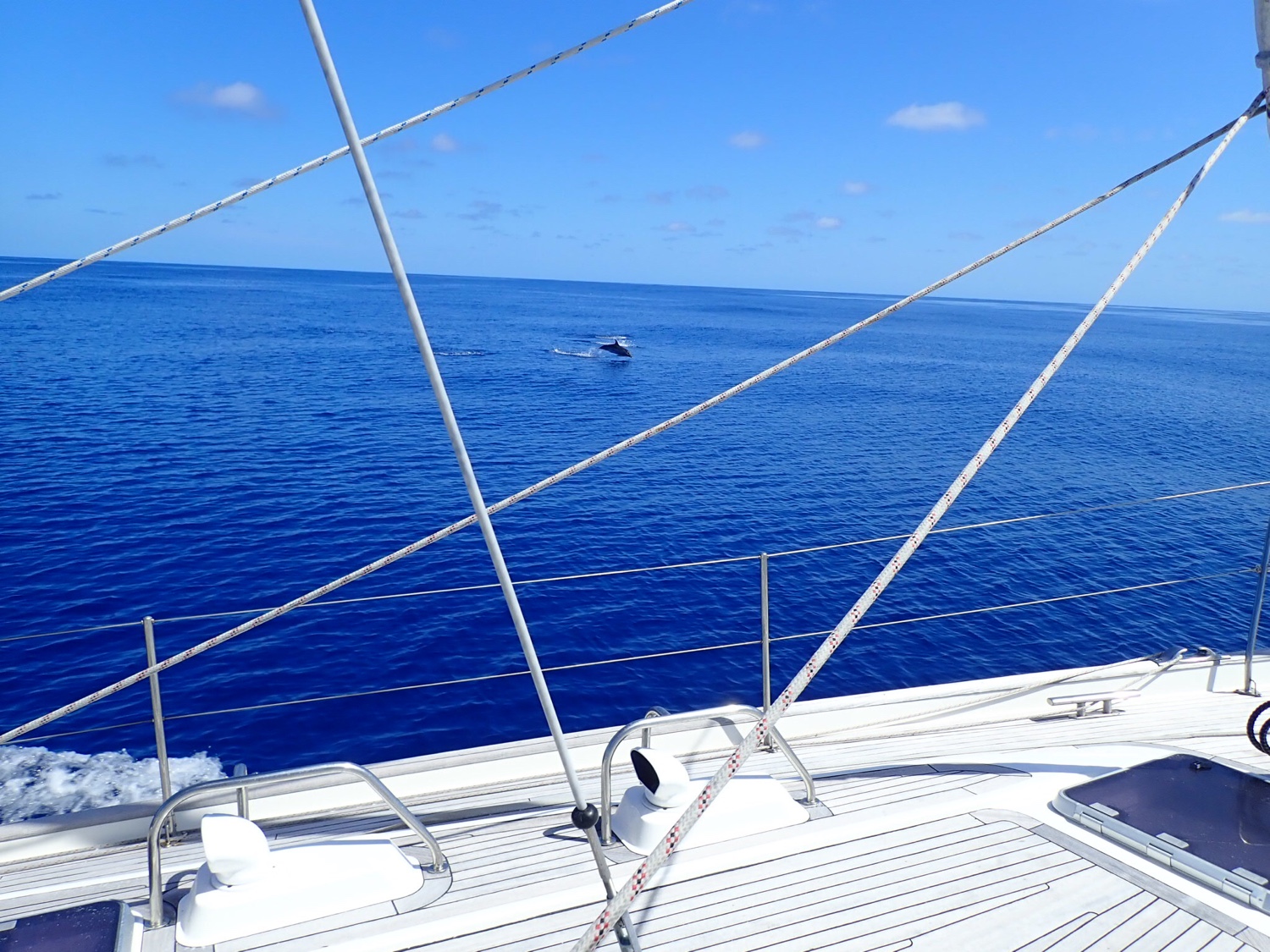 A pod of dolphins charging in to swim at our bows
A pod of dolphins charging in to swim at our bows Sun rising over a silky sea
Sun rising over a silky sea


 Preparations in full swing, Rick scrubbing a very furry prop
Preparations in full swing, Rick scrubbing a very furry prop Stunning tropical colours in the BVI
Stunning tropical colours in the BVI Not sure who this chap is but his home is a colourful mini reef
Not sure who this chap is but his home is a colourful mini reef Thursdays sunset
Thursdays sunset It might be rolly but the views pretty good
It might be rolly but the views pretty good A slightly clumsy take off but he made it.
A slightly clumsy take off but he made it. The cave was full of thousands of fish, tiny and huge (see bottom right corner)
The cave was full of thousands of fish, tiny and huge (see bottom right corner) Tarpons carolling their supper
Tarpons carolling their supper Final walk along the beach at Trellis Bay
Final walk along the beach at Trellis Bay Fruit Salad Beach, Gorda Sound
Fruit Salad Beach, Gorda Sound Fan corals in Gorda Sound
Fan corals in Gorda Sound Robyn exploring the Baths
Robyn exploring the Baths Hawksbill turtle with a couple of small remora hitching a lift
Hawksbill turtle with a couple of small remora hitching a lift Hills of Tortola in the morning light
Hills of Tortola in the morning light Mangroves stripped bare but the Atlantic forces its way into the lagoon just the same.
Mangroves stripped bare but the Atlantic forces its way into the lagoon just the same.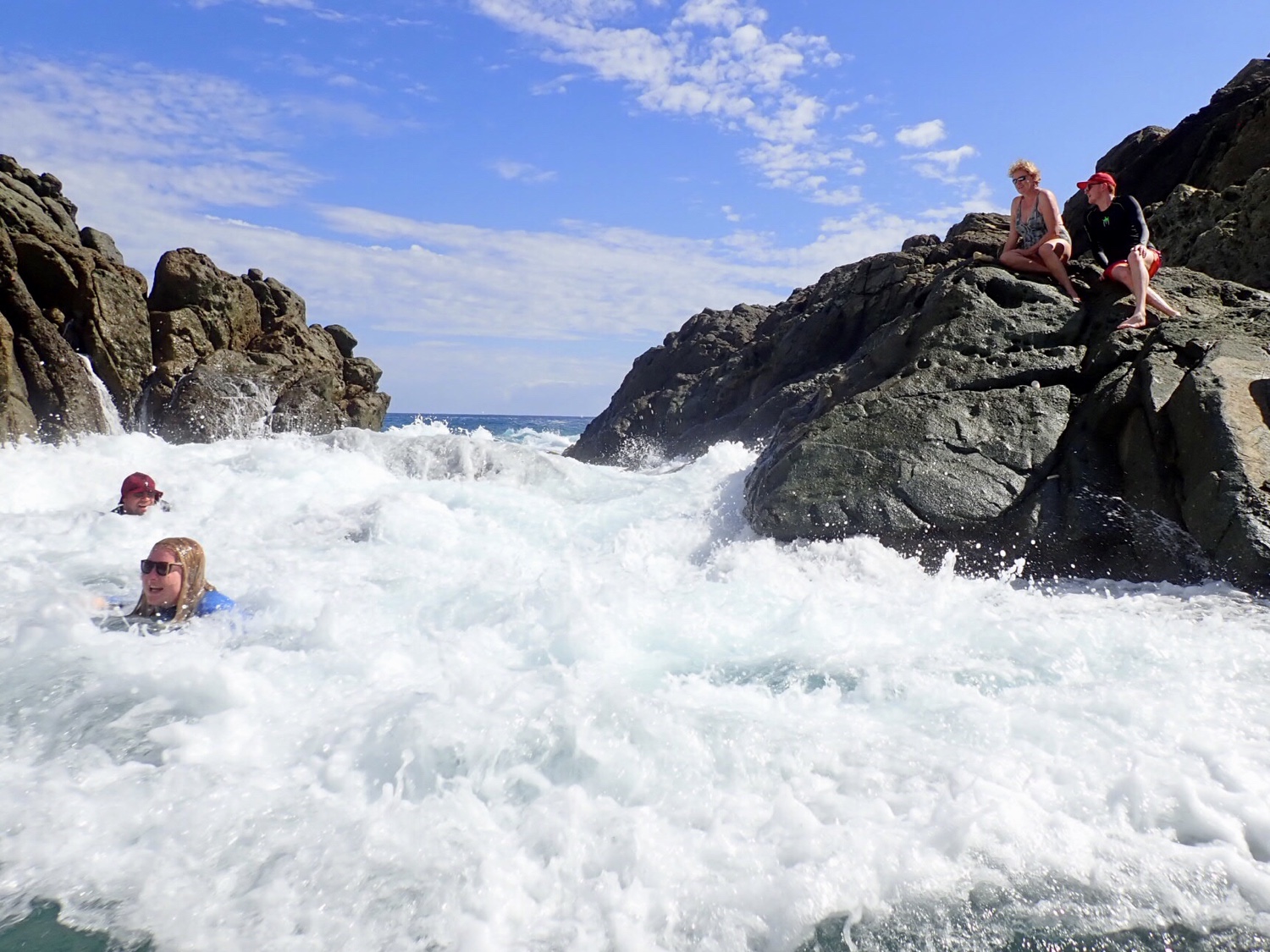 Having fun at the Bubbly Pool, Diamond Cay
Having fun at the Bubbly Pool, Diamond Cay A queen trigger fish snapped by Matt and a perfect Parrot fish caught by Rick
A queen trigger fish snapped by Matt and a perfect Parrot fish caught by Rick Wrecks still litter Trellis Bay
Wrecks still litter Trellis Bay Readying to snorkel around Monkey Point
Readying to snorkel around Monkey Point Cane Garden Bay
Cane Garden Bay Crew earning their keep
Crew earning their keep Just plain greedy
Just plain greedy Lunch time view
Lunch time view Pretty streets in Gustavia
Pretty streets in Gustavia Racing Yacht Sorcha setting out for a sail
Racing Yacht Sorcha setting out for a sail The stunning 200ft schooner Athos joins us in Hermitage Bay.
The stunning 200ft schooner Athos joins us in Hermitage Bay. The old dockyard buildings although converted to commercial use still overlook large sailing boats
The old dockyard buildings although converted to commercial use still overlook large sailing boats Nightscape created by dozens of mega yachts.
Nightscape created by dozens of mega yachts.
 Large spotted porcupine fish
Large spotted porcupine fish Beautiful Indian River
Beautiful Indian River Amazing roots of the Mangrove trees
Amazing roots of the Mangrove trees Iguana sunning himself in the early morning warmth.
Iguana sunning himself in the early morning warmth. Pretty Town of Desharies
Pretty Town of Desharies Marigot Bay from the cliff top
Marigot Bay from the cliff top The Pitons with the roof tops of Soufriere lying in the valley
The Pitons with the roof tops of Soufriere lying in the valley

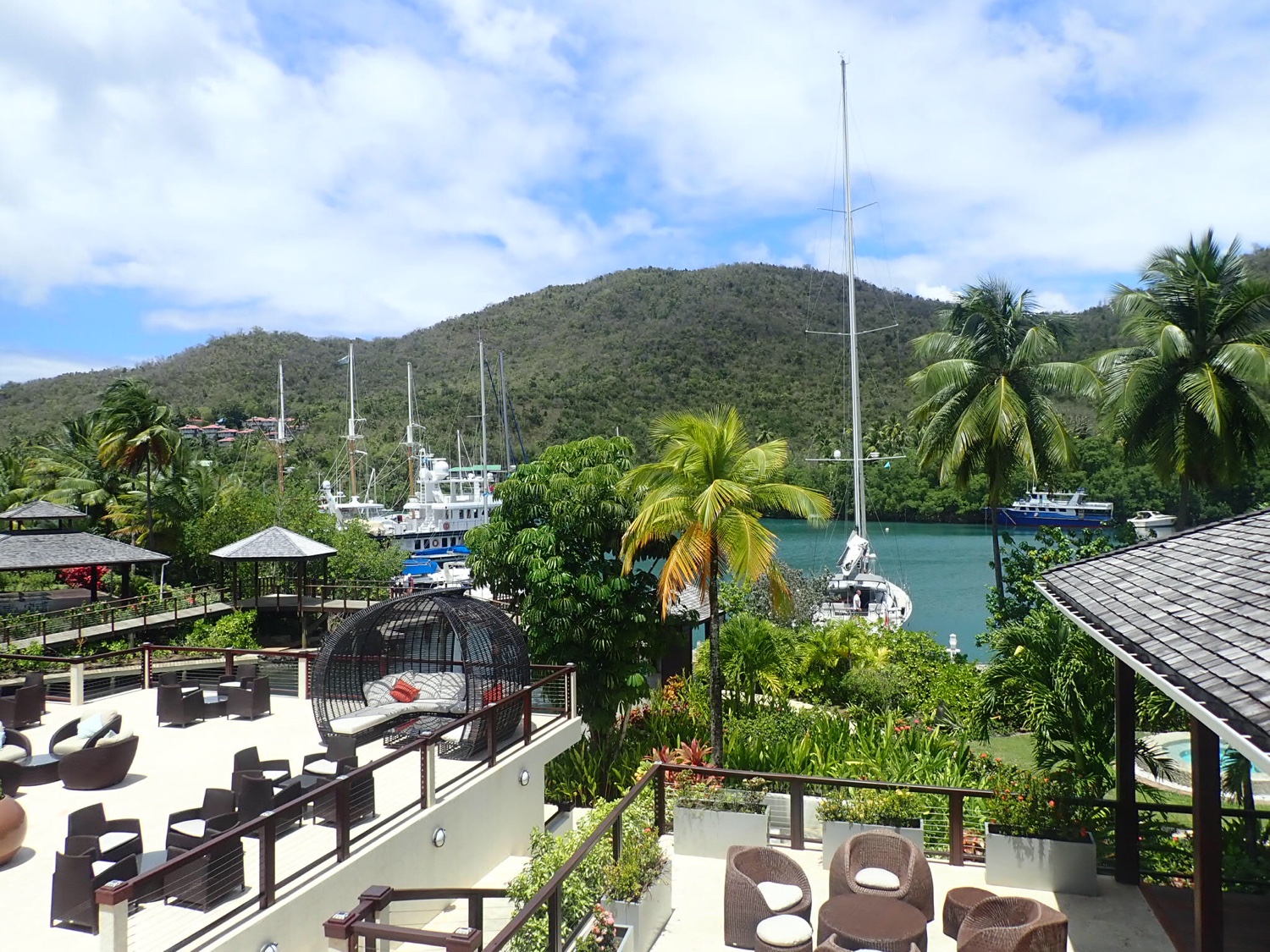 View of Marigot Bay from the resort
View of Marigot Bay from the resort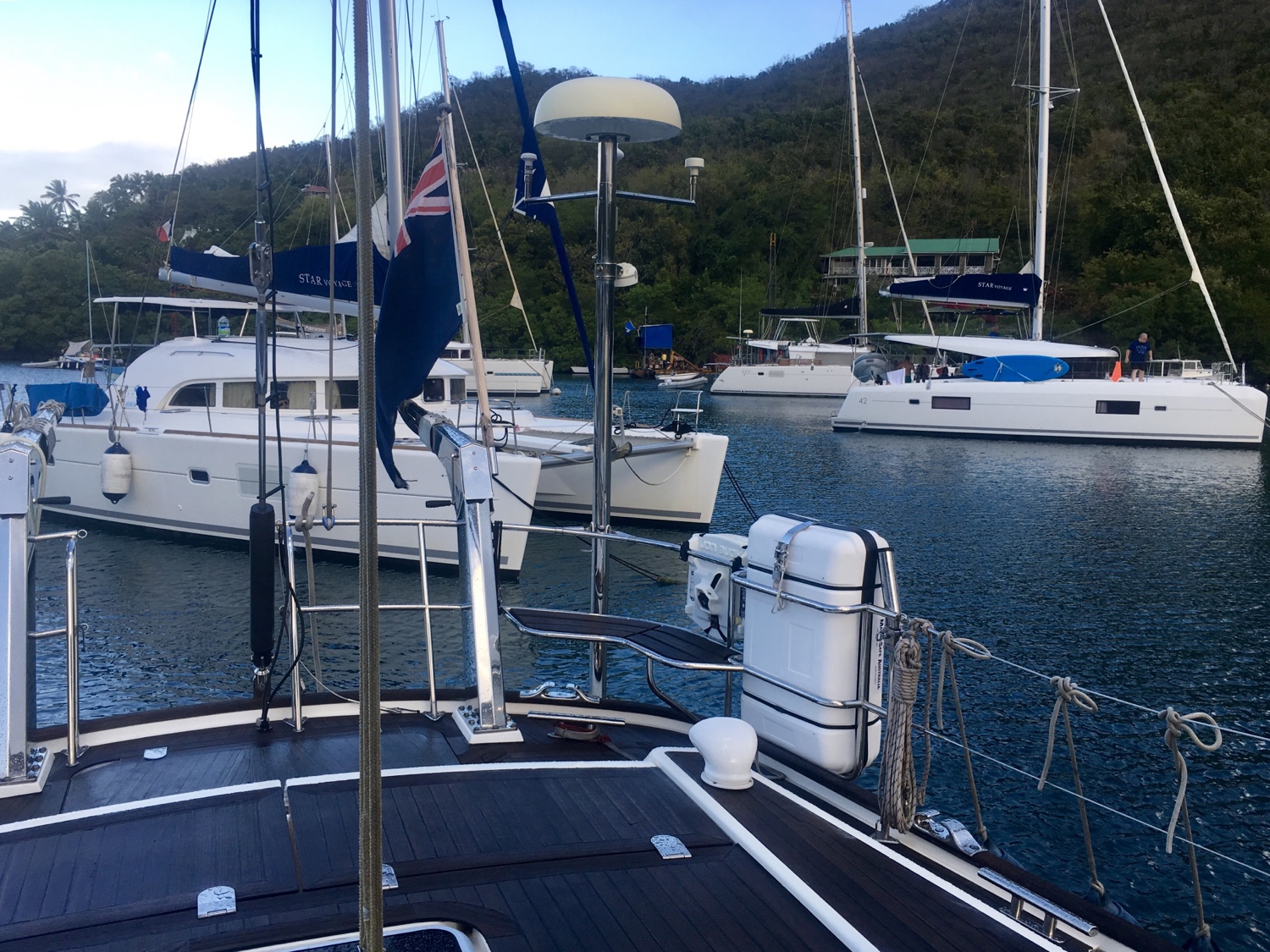 Crowded mooring field at Marigot Bay
Crowded mooring field at Marigot Bay Lovely beach on Sandy Island
Lovely beach on Sandy Island Busy Bay at a Port Elizabeth, Bequia
Busy Bay at a Port Elizabeth, Bequia A shower threatens over the stunning Mountains of St Vincent
A shower threatens over the stunning Mountains of St Vincent Today’s view from the cockpit.
Today’s view from the cockpit. Raya being lifted out of the water by the Hulk, a huge lift in Grenada.
Raya being lifted out of the water by the Hulk, a huge lift in Grenada. Mount Carmel Falls
Mount Carmel Falls Girls taking a cooling dip
Girls taking a cooling dip The pool at our lovely villa in Grenada
The pool at our lovely villa in Grenada Successful fishing day
Successful fishing day Masses of Sargassum seaweed covered the ocean
Masses of Sargassum seaweed covered the ocean Got here beer Grenada
Got here beer Grenada South Atlantic sunrise
South Atlantic sunrise Capturing the moment
Capturing the moment Another squall comes through
Another squall comes through Georgetown and Long beach
Georgetown and Long beach Stunning beaches
Stunning beaches Shark warnngs
Shark warnngs Turtle laying her legs
Turtle laying her legs Walking on a Green Mountain
Walking on a Green Mountain Only customers at the petrol station
Only customers at the petrol station Stunning views all around St Helena
Stunning views all around St Helena James Town
James Town St Helena Ladder
St Helena Ladder Wow! Swimming with Whale Sharks
Wow! Swimming with Whale Sharks Napoleon’s residence while in St Helena
Napoleon’s residence while in St Helena Dodgy fuel dock, Cape Town
Dodgy fuel dock, Cape Town Pontoon wars
Pontoon wars It was a chilly first few days
It was a chilly first few days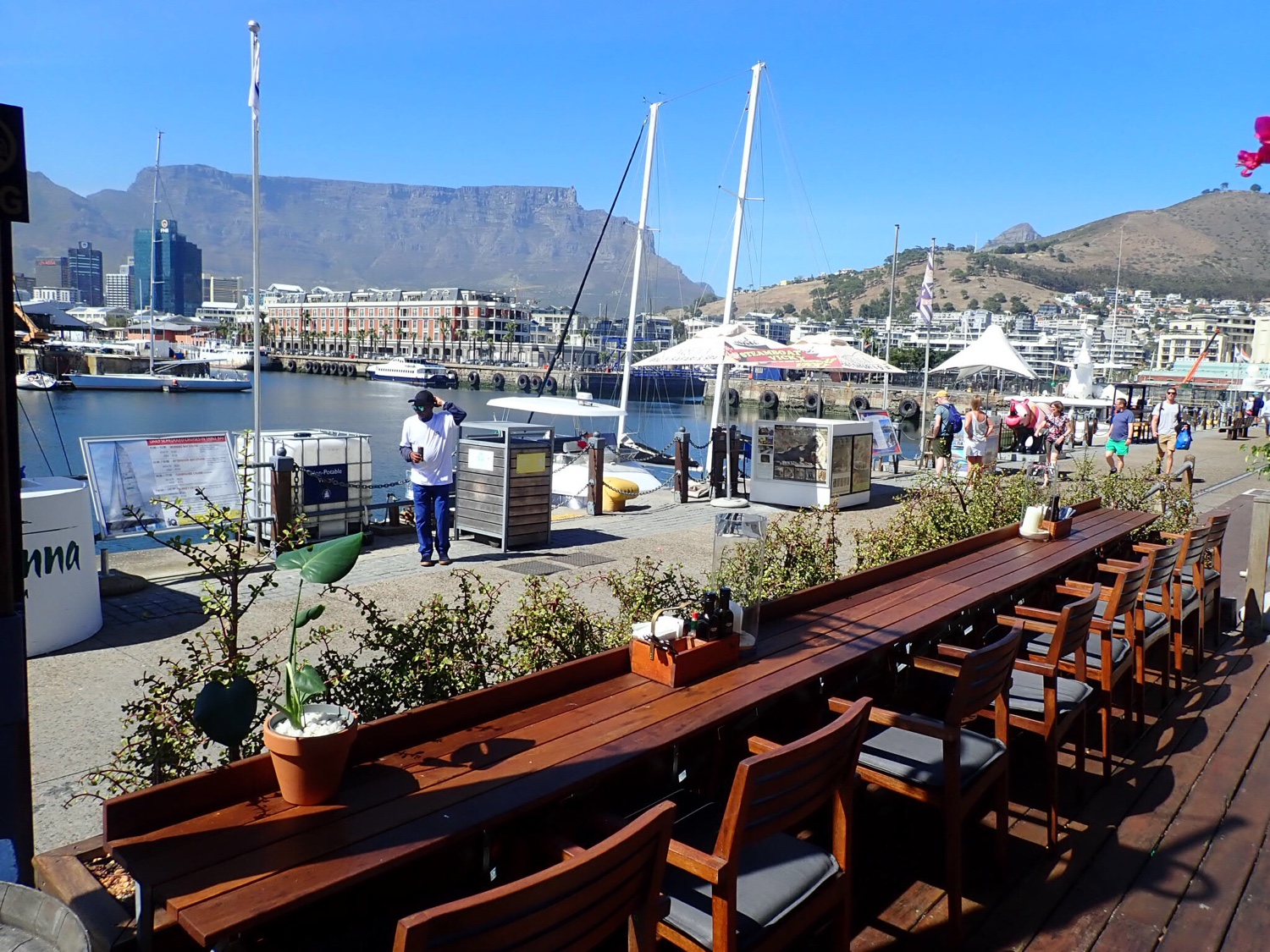 Table mountain from the V&A Watefront.
Table mountain from the V&A Watefront. Signal Hill and Cape Town City
Signal Hill and Cape Town City Taking a break and enjoying the view out to the Cape.
Taking a break and enjoying the view out to the Cape. A bit cold for a swim
A bit cold for a swim Groot Constantia
Groot Constantia Rather rickety pontoons in Port Elizabeth Marina
Rather rickety pontoons in Port Elizabeth Marina Large waves pounding the coast
Large waves pounding the coast The small beach at Storms River Mouth
The small beach at Storms River Mouth The suspension bridges at Storms River mouth.
The suspension bridges at Storms River mouth. Welcome sight as we entered Cape Town
Welcome sight as we entered Cape Town Passing through the bridges to get into the V&A Marina.
Passing through the bridges to get into the V&A Marina.